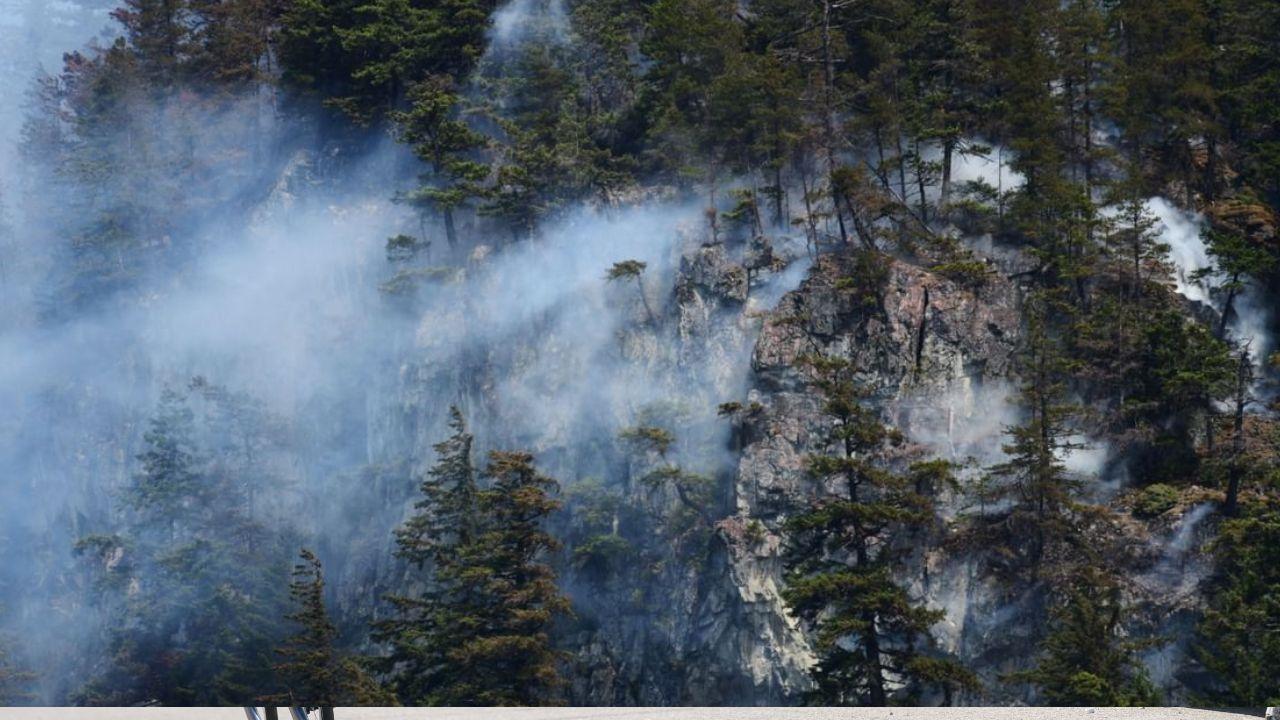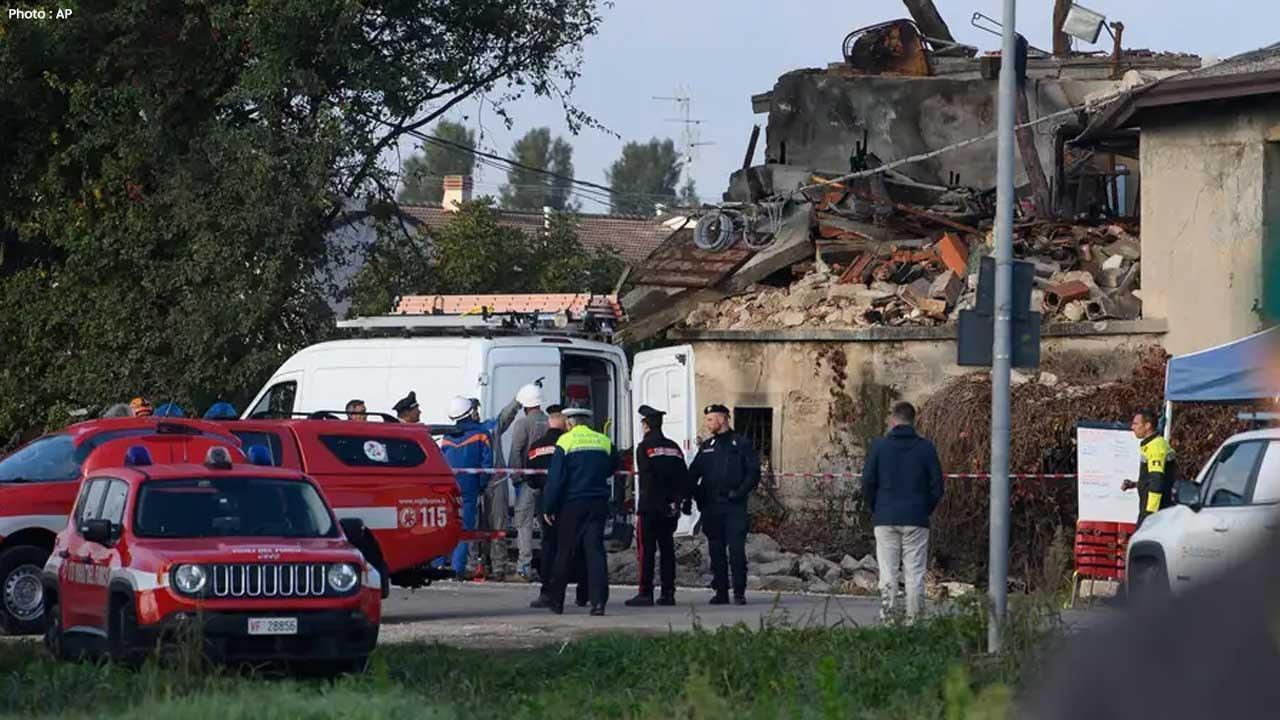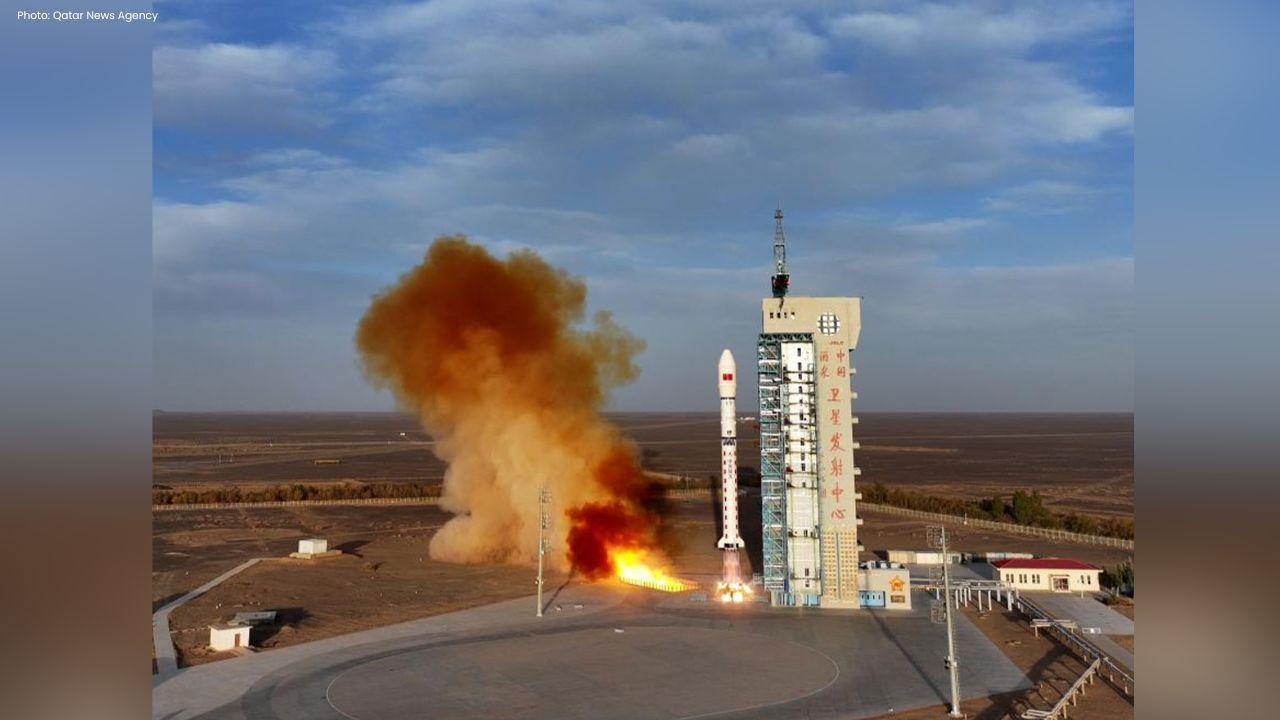
Post by : Mumtaaz Qadiri
Photo: WAM
Canada is experiencing one of its largest wildfire seasons to date in 2025. Official records indicate that more than 13.6 million acres (about 5.5 million hectares) have already burned this year. Although this area burned is below the record outbreak in 2023, it is still the second-worst on record for this point in the year.
The fire season began with dry and warm conditions that helped numerous fires ignite throughout the country. Firefighters and officials remain on high alert as the fires continue to spread across forests and grasslands, causing vast damage. This year’s fire season is now officially considered one of the most destructive, second only to the extreme season of two years ago.
Comparison with the Historic 2023 Season
The wildfire season of 2023 remains the most severe ever recorded in Canada. That year, more than 15 million hectares (42.9 million acres) were destroyed by over 6,000 wildfires, marking a dramatic spike in destruction. The catastrophic nature of those fires drew international attention.
By comparison, 2025’s fires have burned more than 13.6 million acres so far, making it a devastating season but still slightly less destructive than 2023 in terms of total area. However, the pace of this year’s burning is alarming, and the final totals may still approach the record set in 2023.
Number of Fires and Active Blazes
To date, Canada has recorded about 3,000 wildfires in 2025. Among these, 561 remain active and burning as of the most recent official update. Fire officials have described 2025 as having “one of the highest cumulative areas burned for this time of year, behind the record-setting fire season of 2023.”
A single large wildfire can consume tens of thousands of acres in a matter of days, making these 561 active fires a severe threat to both human communities and the environment. Many of these fires are occurring in remote wilderness areas, which makes containment more difficult and increases the risk that they will merge or grow rapidly.
Climate Change as the Underlying Cause
Experts agree that climate change is a primary driver behind the increasing frequency and intensity of wildfires in Canada. Michael Norton of the Natural Resources Ministry noted that Canada is warming at least twice as fast as the global average. Scientists call this phenomenon Arctic amplification, where northern regions warm more rapidly than the rest of the planet.
Warming temperatures result in less snowfall during the winter months. Snow levels are critical for keeping moisture in the soil and forests. With less snow and shorter, milder winters, the land dries out sooner, making it easier for fires to ignite and spread. Similarly, summers begin earlier and extend longer, creating a prolonged risk period for wildfire outbreaks.
Environmental Conditions Fueling Fire Spread
The current environmental conditions in many provinces and territories are especially prone to wildfire. Extended dry spells have lowered moisture levels in soil, vegetation, and forest litter. A single lightning strike or careless human action can spark a fire.
Once a fire begins, strong winds and low humidity help it move quickly through forests. This is especially dangerous in tinder-dry vegetation. In remote areas, fires can burn unchecked for days or weeks, growing until they reach towns or protected areas.
Impacts on Air Quality and Public Health
Even communities far from the flames are affected by wildfire smoke. Canada has issued health warnings for several provinces as smoke plumes drift across state and provincial borders. Smoke particles can cause breathing difficulties and exacerbate conditions such as asthma and heart disease.
Elderly individuals, young children, and those with chronic health problems are especially vulnerable to poor air quality. Many schools and public health agencies are advising residents to stay indoors and reduce activity until the air clears.
Effects on Wildlife and Natural Habitats
Wildfires greatly alter the habitats of wildlife. When large areas of forest and grassland burn, animals lose their homes and food sources. Some smaller animals may perish in the flames, while others are forced to flee into unfamiliar territory.
Burned areas also lose their ability to support certain plant and animal species. While some ecosystems may eventually recover after many years if left undisturbed, other areas could permanently shift to new ecological states or be replaced by invasive species.
Economic and Community Consequences
Wildfires have major costs beyond ecology. Emergency response efforts involve thousands of firefighters and support staff. Heavy equipment like helicopters, aircraft, and transport vehicles drives up spending.
Homes and businesses in threatened areas are sometimes evacuated as a precaution. The loss of property leads to financial hardship for individuals and families. The longer the fires burn, the more economic resources are required for firefighting and recovery.
Canada’s Response and Firefighting Measures
Canada deploys fire crews across provinces to combat wildfires. They also receive international aid when necessary, with help from countries such as the United States and Australia. Modern firefighting tools like aircraft and advanced ground equipment play a key role in containing fires.
In addition to reactive efforts, Canada uses fire prevention and land management techniques. Controlled burns selectively clear old and dense forests to reduce fuel for potential wildfires. Firebreaks are established to stop fire spread. Public campaigns also advise residents how to reduce the risk of accidental ignition.
Why Limiting Greenhouse Gases Is Essential
While managing fires helps, experts stress that the root problem is climate change. The combustion of fossil fuels releases greenhouse gases like carbon dioxide and methane. These gases trap warmth in the atmosphere and drive global warming, which in turn worsens wildfire conditions.
Scientists say only deep reductions in greenhouse gas emissions can stop the cycle of rising temperatures, more frequent extreme weather, and increasingly serious wildfires. Transitioning to renewable energy and cleaner technologies is critical for limiting future wildfire severity.
Is This the New Normal for Canada?
If global emissions continue on their current path, scientists warn that several years of extreme wildfire activity may become the new normal in Canada and elsewhere. Predictive models suggest hotter, drier conditions will prevail for longer periods, lengthening wildfire seasons.
Canada is not alone in this trend. The western United States, Mediterranean Europe, Australia, and parts of South America have all experienced dangerous wildfire seasons in recent years. The scale of these fires has raised global concerns about how climate change affects land, homes, and lives.
What Can Individuals Do to Help
Though the wildfire crisis may feel overwhelming, individuals can take actions to reduce risk. Conserving energy, cutting down on fossil fuel use, and supporting renewable power help slow climate change.
At a local level, people can follow fire safety guidelines, create defensible space around homes, and support reforestation efforts. Communities can push local leaders to invest in fire prevention and clean energy infrastructure.
A Call to Action for Policy and Climate Action
The 2025 wildfire season in Canada, with over 13 million acres burned, is a stark warning. Without far-reaching climate action, we face more frequent and severe seasons like this one. Governments must strengthen policies to curb emissions, accelerate clean energy adoption, and fund wildfire defense programs.
Communities must also adapt by improving land management and emergency response systems. International cooperation remains essential, because fire, smoke, and climate impacts cross borders.
Canada’s wildfire season of 2025 has already become one of the country’s most damaging ever. About 13.6 million acres are burned, making this year second only to the historic season of 2023. Climate change is driving the scale and intensity of these fires by causing warmer, drier conditions year after year.
Despite heroic firefighting efforts and preventive steps, only meaningful climate action at global scale can halt this trend. The health of people, wildlife, and forests depend on it. Understanding the causes and consequences of wildfires is a vital first step. From there, communities and policymakers must act quickly—before future seasons become even more dangerous.










Google to Invest $15 Billion in India’s AI Data Hub
Google will invest $15 billion to build a massive AI data hub in southern India, marking its largest

Gautam Gambhir Praises Shubman Gill’s Leadership Success
India’s head coach Gautam Gambhir praised Shubman Gill’s leadership after the 2-0 Test series win ov

KL Rahul Guides India to Series Win Over West Indies 2-0
India defeated West Indies by seven wickets in the second Test, sweeping the series 2-0 with KL Rahu

China Launches Shiyan-31 Test Satellite Successfully
China successfully launches Shiyan-31 satellite to test optical imaging technology, marking the 599t

Coach to Decide if Messi Plays Against Puerto Rico
Argentina coach Lionel Scaloni will decide Lionel Messi’s participation against Puerto Rico after fi

Pedri Credits Ferran Torres For Support And Guidance
Pedri highlights Ferran Torres’ support and guidance, saying strict advice and teamwork keep him mot